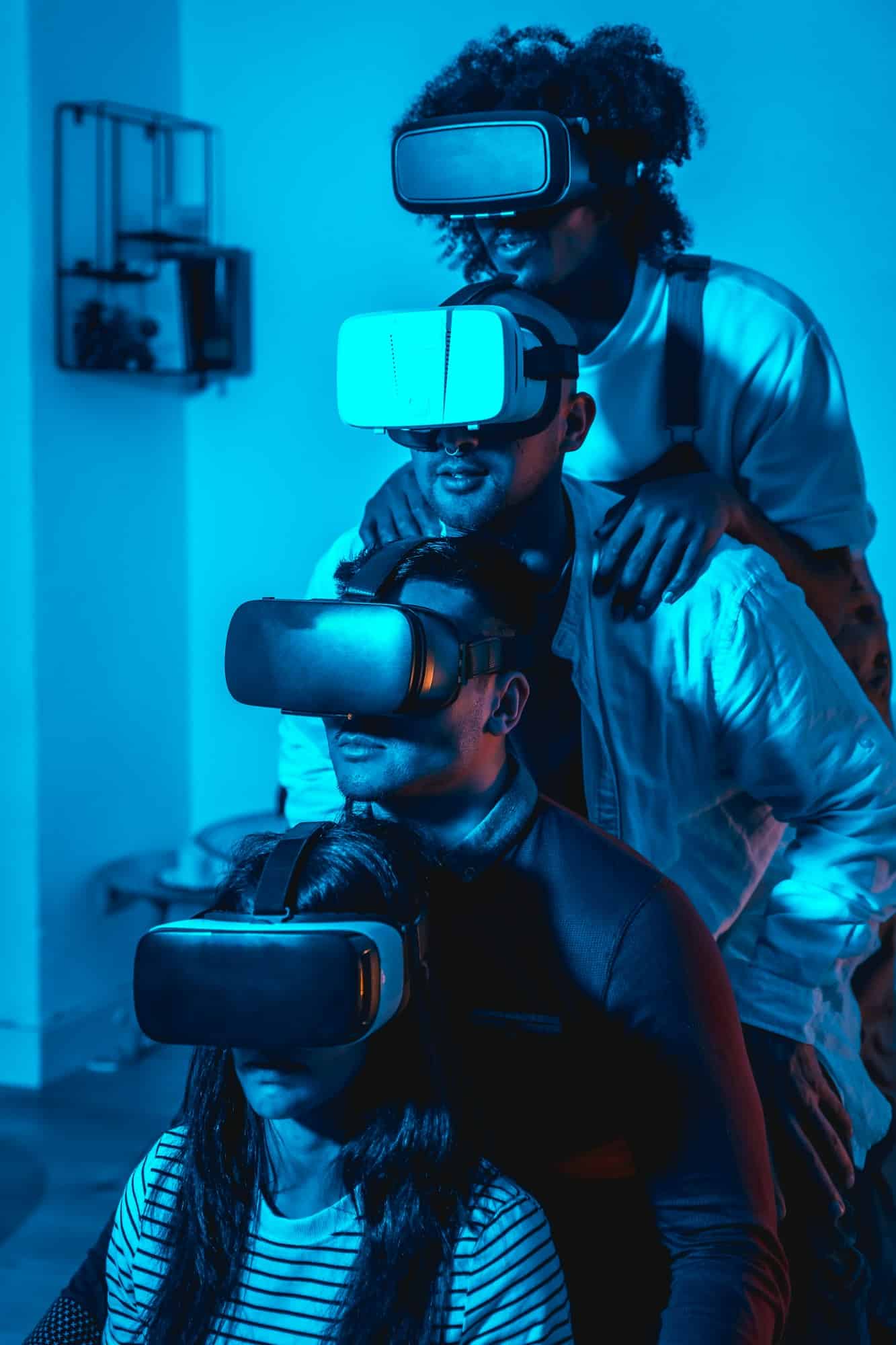What Is the Best Approach to Employee Health and Safety Training Using VR?

Employee training is a vital aspect of maintaining a safe and efficient workplace. Traditionally, training has been conducted through in-person seminars and workshops, which can be time-consuming and costly. However, with the advent of virtual reality (VR) technology, we have the opportunity to revolutionize the way we train employees. VR offers a unique and immersive experience that can help employees learn critical safety skills in a realistic environment, without the risks associated with real-world training exercises. Let’s delve into how using VR for safety training can benefit your organization and the best practices for implementing this innovative approach.
The Benefits of Using VR for Safety Training
No longer just for gaming, VR technology has made its way into various industries, offering innovative solutions for a multitude of challenges. In the realm of employee training, particularly for health and safety, VR presents various benefits.
A lire aussi : What Are the Challenges of Establishing a UK-Based Telemedicine Service?
Virtual reality provides an immersive learning experience for employees. Through the use of a VR headset and controllers, workers can engage with a simulated environment that mimics real-world scenarios. This allows them to practice skills, identify hazards, and learn how to respond to potentially dangerous situations safely.
Moreover, VR training can save considerable time as employees can undergo training simultaneously, regardless of their geographical location. It also allows for instant feedback and the ability to repeat exercises as many times as necessary, ensuring that workers fully understand safety procedures before they encounter them in the workplace.
A découvrir également : What Are the Effective Strategies for Content Marketing in the UK Legal Sector?
How VR Enhances Learning Experience
To understand why VR is such an effective training tool, it’s necessary to examine how it enhances the learning experience. VR training programs are designed to be interactive, engaging, and realistic, which helps to increase knowledge retention and improve skills acquisition.
By immersing employees in virtual scenarios that closely resemble their work environment, VR training allows them to learn by doing, which is far more effective than traditional lecture-based training methods. VR also enables workers to make mistakes in a risk-free setting, allowing them to learn from their errors without any real-world consequences.
In addition to these practical benefits, VR training can also improve workers’ confidence. By practicing their skills in a virtual environment, employees can build self-assuredness that will translate to their real-life work setting.
What Does a VR Training Program Look Like?
When considering a VR training program for your organization, you may be wondering what exactly these programs entail. While the specifics can vary depending on the industry and the company’s individual needs, most VR training programs follow a similar structure.
Typically, employees wear a VR headset that provides a 360-degree view of a simulated environment. This environment is designed to closely resemble the employee’s work setting and includes potential safety hazards that they may encounter on the job. Employees can then interact with this environment using handheld controllers, allowing them to practice their skills and learn how to respond appropriately to various situations.
These programs can also include features such as real-time feedback, which provides employees with immediate insights into their performance and helps them to improve. Furthermore, the ability to repeat scenarios as often as necessary ensures that workers have ample opportunities to practice their skills.
Best Practices for Implementing VR Training
While the prospect of implementing VR for safety training is certainly exciting, it’s crucial to approach it strategically to reap its full benefits. Here are some best practices for incorporating VR into your training program.
Firstly, it’s important to carefully select the scenarios that will be included in your VR training. These scenarios should be relevant to your employees’ work and include potential safety hazards that they are likely to encounter on the job.
Secondly, ensure that your VR training program includes a comprehensive feedback system. Feedback is a critical component of the learning process, and providing employees with immediate, constructive feedback can help them to improve their skills more quickly.
Lastly, it’s critical to remember that while VR is a powerful tool, it should not replace traditional training methods entirely. Instead, consider using VR as a supplement to your current training program. By combining VR with traditional methods, you can offer a comprehensive, effective training program that helps to keep your employees safe and confident.
Embracing the Future of Training
The use of VR in safety training is not simply a trend, but a significant step forward in how we approach employee education. By offering an immersive, interactive, and realistic training experience, VR has the potential to significantly enhance learning outcomes, resulting in a safer, more efficient workplace. As we continue to explore and embrace this technology, we are opening up new possibilities for employee training and creating a better, safer working world.
Cost-Effectiveness of VR Safety Training
The financial aspect plays a significant role when it comes to introducing new technologies. Fortunately, the use of virtual reality for safety training proves to be a cost-effective solution. Traditional training methods often require a physical location, travel, and material resources, leading to significant expenditure. In contrast, once a VR training program is developed, it can be used repeatedly without additional cost.
Moreover, VR training can reduce operational downtime. Rather than pulling employees away from their work to attend in-person training, VR allows for flexible scheduling. Employees can undergo training whenever it best fits into their workflow, minimising disruption to productivity.
Furthermore, the potential of VR to prevent workplace accidents and injuries cannot be overlooked. By equipping employees with the knowledge and skills they need to maintain workplace safety, businesses can avoid costly compensation claims and potential reputational damage associated with accidents. Therefore, while the upfront investment in VR technology may seem substantial, the long-term cost savings and improved safety outcomes make it a worthy venture.
Potential of VR in Specific Industries: Oil and Gas
To further underscore the potential of VR in safety training, let’s take a look at one specific industry that could greatly benefit from this technology: the oil and gas industry. This sector is rife with potential safety hazards, and training in real life can be exceptionally risky. Here, virtual reality proves to be of invaluable assistance.
With VR, employees in the oil and gas industry can be placed in a simulated environment that mimics an oil rig, for example. They can interact with various elements, learn to handle different machinery, and respond to emergency scenarios all in a safe and controlled setting. This approach ensures they’re fully prepared to deal with real-life situations, thus significantly reducing the risk of accidents and injuries.
Moreover, VR training can enable oil and gas companies to conduct safety drills more frequently and without the logistical challenges associated with real-world exercises. This, in turn, facilitates a more robust safety culture within the organization, positioning it favourably from a reputational and regulatory standpoint.
In Conclusion: An Inevitable Shift towards VR
The revolution of employee training with virtual reality is no longer a distant future concept. It’s here, and it’s making a significant impact. By offering immersive learning experiences that improve knowledge retention and skills acquisition, VR provides an effective and efficient method for health and safety training.
Moreover, the cost-effectiveness and flexibility of VR, coupled with its ability to recreate realistic, risk-free environments for skill practice, make it an indispensable tool in the modern workplace. Specific industries with high-risk environments, such as oil and gas, could find particular value in turning to VR for safety training.
As we move forward, it’s clear that VR will continue to play an increasingly crucial role in workplace safety training. By adopting virtual reality training, businesses can not only protect their employees but also foster a safer and more productive work environment. In the end, embracing VR for safety training means embracing a safer, more efficient future.
